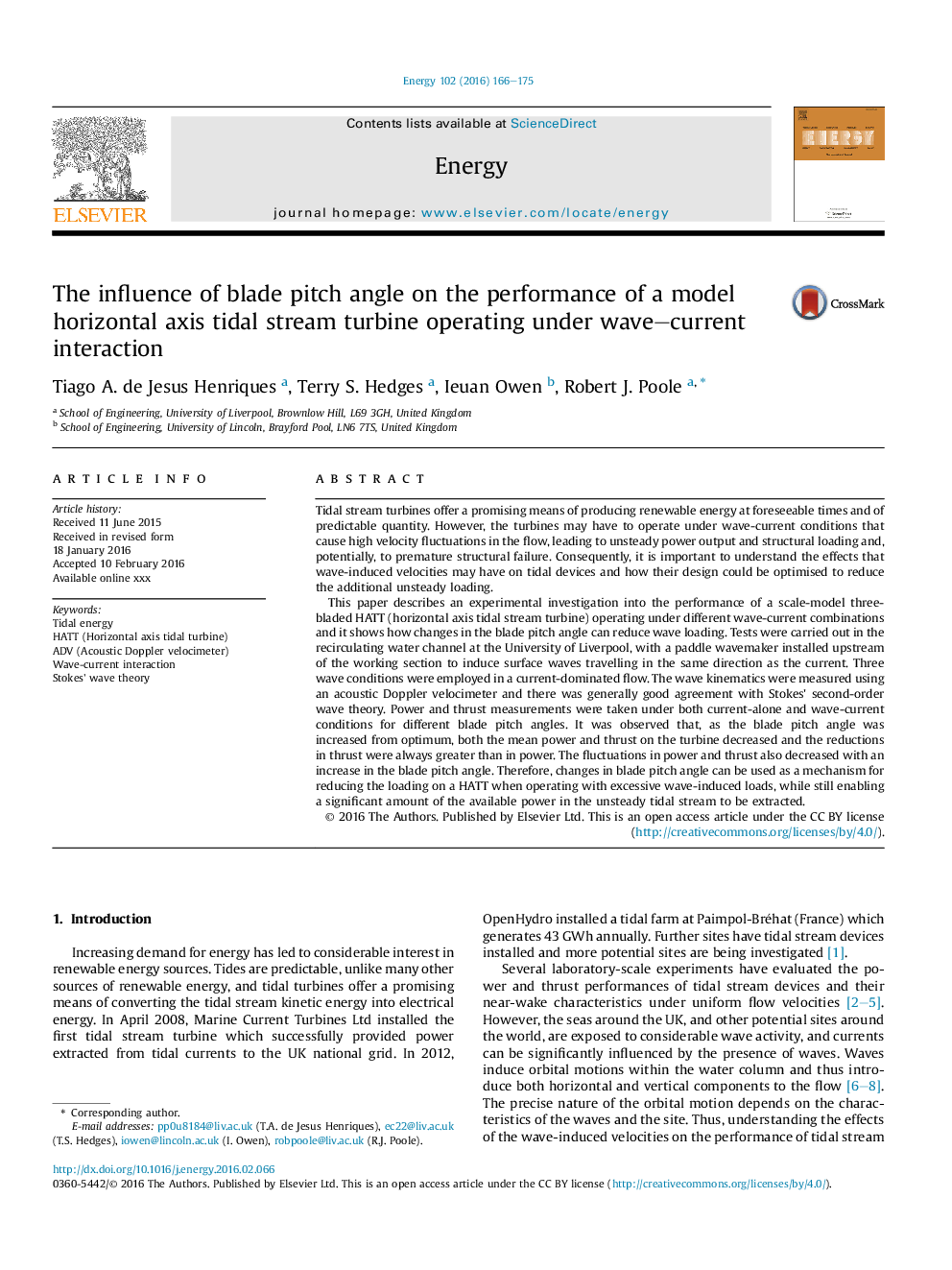| Article ID | Journal | Published Year | Pages | File Type |
|---|---|---|---|---|
| 8073983 | Energy | 2016 | 10 Pages |
Abstract
This paper describes an experimental investigation into the performance of a scale-model three-bladed HATT (horizontal axis tidal stream turbine) operating under different wave-current combinations and it shows how changes in the blade pitch angle can reduce wave loading. Tests were carried out in the recirculating water channel at the University of Liverpool, with a paddle wavemaker installed upstream of the working section to induce surface waves travelling in the same direction as the current. Three wave conditions were employed in a current-dominated flow. The wave kinematics were measured using an acoustic Doppler velocimeter and there was generally good agreement with Stokes' second-order wave theory. Power and thrust measurements were taken under both current-alone and wave-current conditions for different blade pitch angles. It was observed that, as the blade pitch angle was increased from optimum, both the mean power and thrust on the turbine decreased and the reductions in thrust were always greater than in power. The fluctuations in power and thrust also decreased with an increase in the blade pitch angle. Therefore, changes in blade pitch angle can be used as a mechanism for reducing the loading on a HATT when operating with excessive wave-induced loads, while still enabling a significant amount of the available power in the unsteady tidal stream to be extracted.
Keywords
Related Topics
Physical Sciences and Engineering
Energy
Energy (General)
Authors
Tiago A. de Jesus Henriques, Terry S. Hedges, Ieuan Owen, Robert J. Poole,
